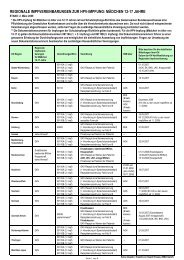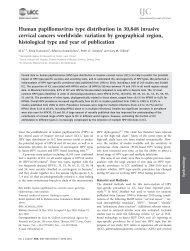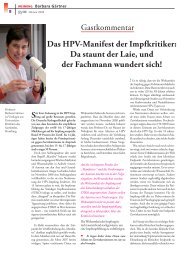You also want an ePaper? Increase the reach of your titles
YUMPU automatically turns print PDFs into web optimized ePapers that Google loves.
CERVICAL CANCER SCREENING: A PUBLIC HEALTH ISSUEThe psychological costs of screening – particularly the anxiety causedwhen an abnormality is reported – should not be overlooked. Becauseof the prevalence of the negative effects of screening, the number ofquality-adjusted life years (QALYs) saved by a screening programmewill be considerably lower than the number of life years saved.With greater public awareness, quality-of-life issues are becomingincreasingly important in public health policy formulation. Thesensitivity and specificity of the techniques used directly influence theeffectiveness of the overall screening programme. Sensitivity isdetermined by the probability that disease (a pre-invasive lesion) willbe detected, and specificity by the probability that women withoutdisease will have a negative test result. Both measures should beconsidered in the context of the entire screening programme. Forexample, following the discovery of a recent false-negative smear, acytologist might refer more (normal) women to colposcopy. Similarly, acolposcopist who observes predominantly normal samples would tendto report those at the extreme end of the normal spectrum asabnormal, thereby lowering the threshold of reporting.The diagnostic testing component of cervicalscreeningThe Pap smear has been very effective in reducing the incidence ofcervical cancer, and up to 80% of cervical cancers can be preventedby a Pap-based screening programme.However, the sensitivity of an individual cytology smear is known tovary widely between settings, and has an average value of 58%. 8 Thisdiscrepancy highlights the difference between the performance of anindividual screening test and that of the programme as a whole. In ananalysis in which sensitivity was calculated for a cytology smear,including the follow-up of positive smears (‘positive screeningepisode’), the sensitivity was 80% for CIN or carcinoma in situ (CIS). 9The transition from <strong>HPV</strong> infection to high-grade dyskaryosis is slow, sothere are several opportunities for a pre-invasive lesion to be detected49








